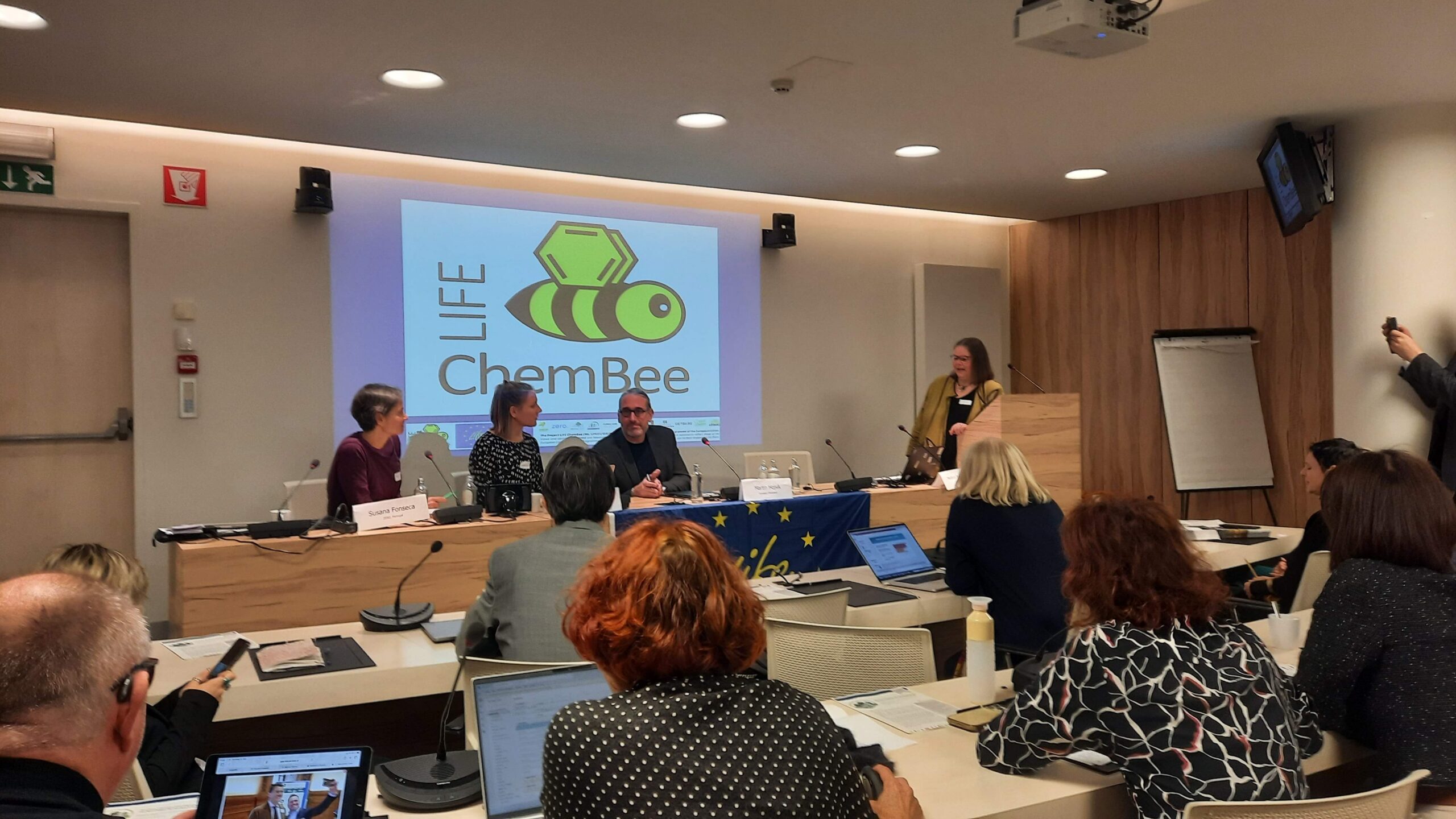
Leading scientists, consumer advocates and policymakers gathered in Brussels for the conference From Evidence to Policy: Toward a Tox free Living Environment. They warned that exposure to Endocrine Disrupting Chemicals in homes and consumer products represents a silent but severe public health and economic crisis. New findings presented to over 65 participants by the LIFE ChemBee and the ToxFree Life for All projects as well as the EU Baltic Sea Interreg project NonHazCity3 revealed widespread contamination of European households by complex chemical mixtures of hormone system disrupting substances (so called endocrine disrupters – EDCs) that contribute to chronic disease and impose enormous health costs.
According to the key note speaker Dr. Aleksandra Rutkowska, the home environment is a significant source of exposure to EDCs through indoor air, dust and daily contact with common products. Current research links such exposure to a shocking amount of lifestyle diseases including 22 cancer outcomes, 18 metabolic disorder outcomes and 17 cardiovascular disease outcomes. Scientists also stressed that the crisis spans generations. EDCs trigger epigenetic changes that not only affect today’s population but also future children and even grandchildren. Other effects include reproduction disorders. Over the last decade, 150 million babies were born preterm, and evidence shows that reducing the use of plastics by half could cut the risk of preterm birth by half as well.
The LIFE ChemBee project documented a cocktail effect in European homes, with mixtures of bisphenols, phthalates, alkylphenols and brominated flame retardants. Data from the CheckED application – a web-based tool collecting data from European households about their toxic burden, used by over 10 000 people, as well as a vast number of peer-reviewed scientific studies show that women of reproductive age are significantly affected by the indoor exposures to EDCs through diet, indoor environment or lifestyle habits. . However, it has been also documented that small lifestyle changes such as changing diet toward organic food, reducing the use of plastic products at your home or use of ecocertified cosmetics can significantly lower the body burden. However, the presenters also pointed out that there is a clear limit to people´s own exposure as consumers, retailers and even producers lack transparency about chemical composition of the products and therefore how to avoid the toxic ones. Rutkowska noted that the annual cost of EDC exposure in Europe is estimated at €163 billion and continues to rise.
“The conference showed that current product related chemical legislation does not adequately protect European citizens and is eroding trust in EU policies,” said conference organiser Karolín Brabcová from Arnika. “Health costs linked to toxic chemical exposure are rising, yet regulation is being weakened by the EU’s competitiveness, simplification and deregulation agenda, supported by a rising number of governments as well asindustry lobbies,” she concluded.

Presenters from the ToxFree Life for All project warned that despite policy ambition, current European systems still fail to protect consumers. Four in five Europeans are concerned about chemicals in everyday products and SafetyGate data from 2024 show that nearly half of all alerts involved chemical risks. Hazardous products remain widely accessible, including jewellery with cadmium thousands of times above the legal limit, frequently sold through online platforms such as TEMU and SHEIN.
Another keynote speaker professor Martin Scheringer from ETH Zürich and RECETOX at Masaryk University notified that European chemical regulation remains biased towards insufficient protection of EU citizens. He described systemic gaps such as incomplete or poor-quality data submitted by the industry for specific substances within REACH registration, unrealistic assumptions and weak hazard identification by the current chemicals legislation. He also pointed to the recurring pattern of regrettable substitution, in which banned substances like PFOA are replaced with structurally similar and comparably persistent chemicals such as GenX. According to Scheringer, the failure to address chemical persistence is especially concerning and contributes to long term risks as we have seen in the growing PFAS disaster where our waters gets more and more polluted by Forever Chemicals. As an example, he recalled that it took the European Union two decades to classify PFOA and PFOS as carcinogenic, while other regretable PFAS substitutes continue to be produced and contaminate our environment.
The NonHazCity3 project presented evidence that hazardous substances remain common in construction materials and contribute significantly to indoor exposure. Organophosphate flame retardants are estimated to cause a loss of thirteen million IQ points every year in the European Union. Biocides have been found to leach from outdoor paints and PFAS have been detected in dust samples from preschools. At the same time, project representatives emphasised that effective solutions already exist. Stronger legal requirements, full transparency regarding the chemical content of new and reused building materials and the use of green procurement systems can substantially reduce exposure. The Swedish BVB system was highlighted as a successful example, enabling the City of Västerås to decrease the number of products assessed as unsuitable for use by half.
“The construction and buildings sector is enormous: globally, it may account for around 37 % of CO₂ emissions; within the EU, production continues to grow — and this scale means that even incremental improvements in material composition, reuse and safety can make a big difference,” says Eugeniy Lobanov, CCB Hazardous Substances Working Area Leader. What stood out from our discussion in the conference is that safe, tox-free construction is achievable — but only if science, policy, and people move together. We need transparency, collaboration, and persistence to ensure the buildings we construct today don’t become tomorrow’s pollution,” Lobanov concludes.
Speakers cautioned against weakening chemical regulation and stressed that progress requires strong legislation, transparent markets and practical support for consumers. Without these steps, the long-term health and economic consequences of EDC exposure will continue to grow.
The projects are funded by the EU Life Programme (LIFE22-GIE-HU-ToxFree LIFE for All, 101114078 and LIFE21-GIE-DE-LIFEChemBee/101074245) and EU Baltic Sea Interreg project NonHazCity3. Views and opinions expressed are however those of the author(s) only and do not necessarily reflect those of the European Union. Neither the European Union nor the granting authority can be held responsible for them.


